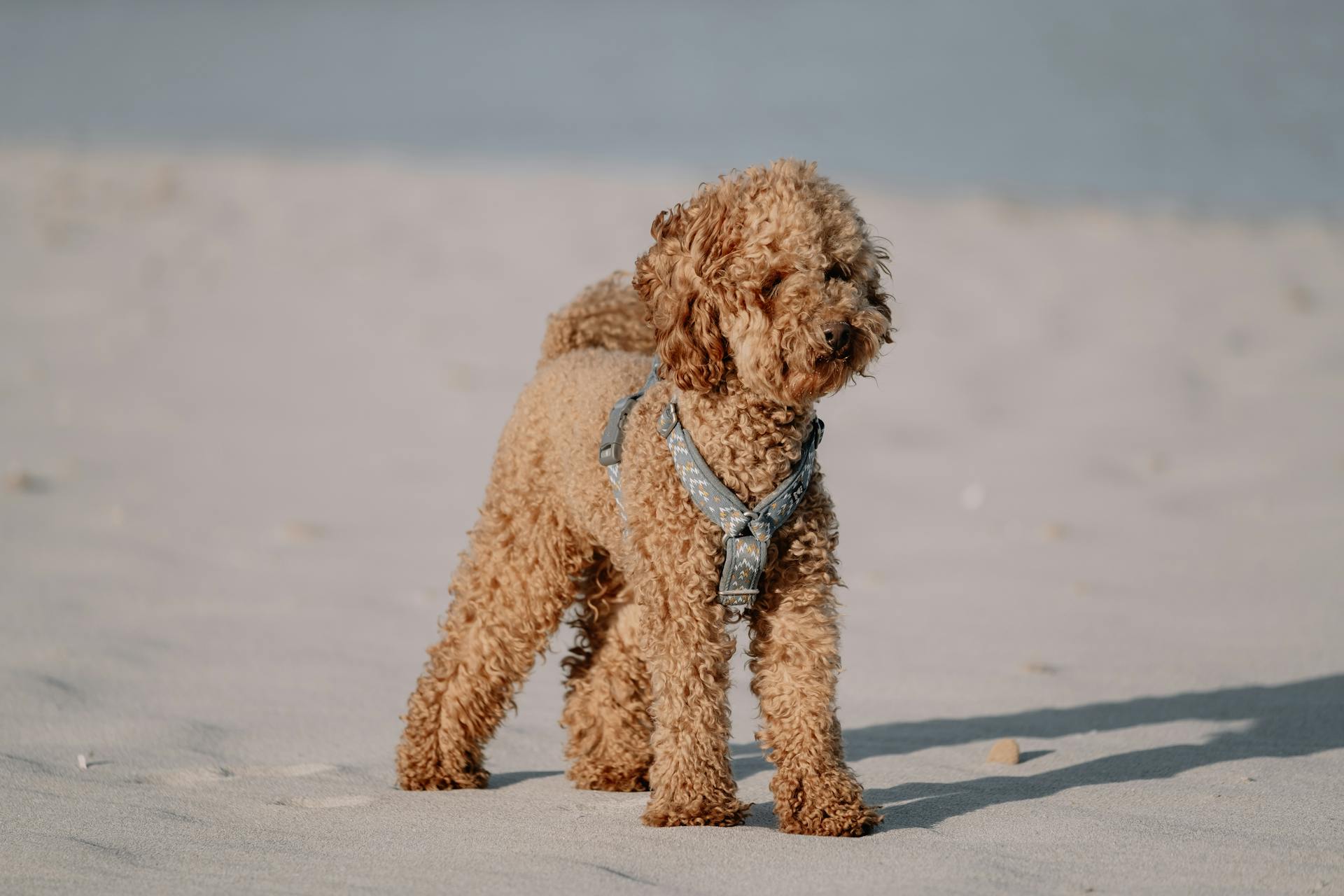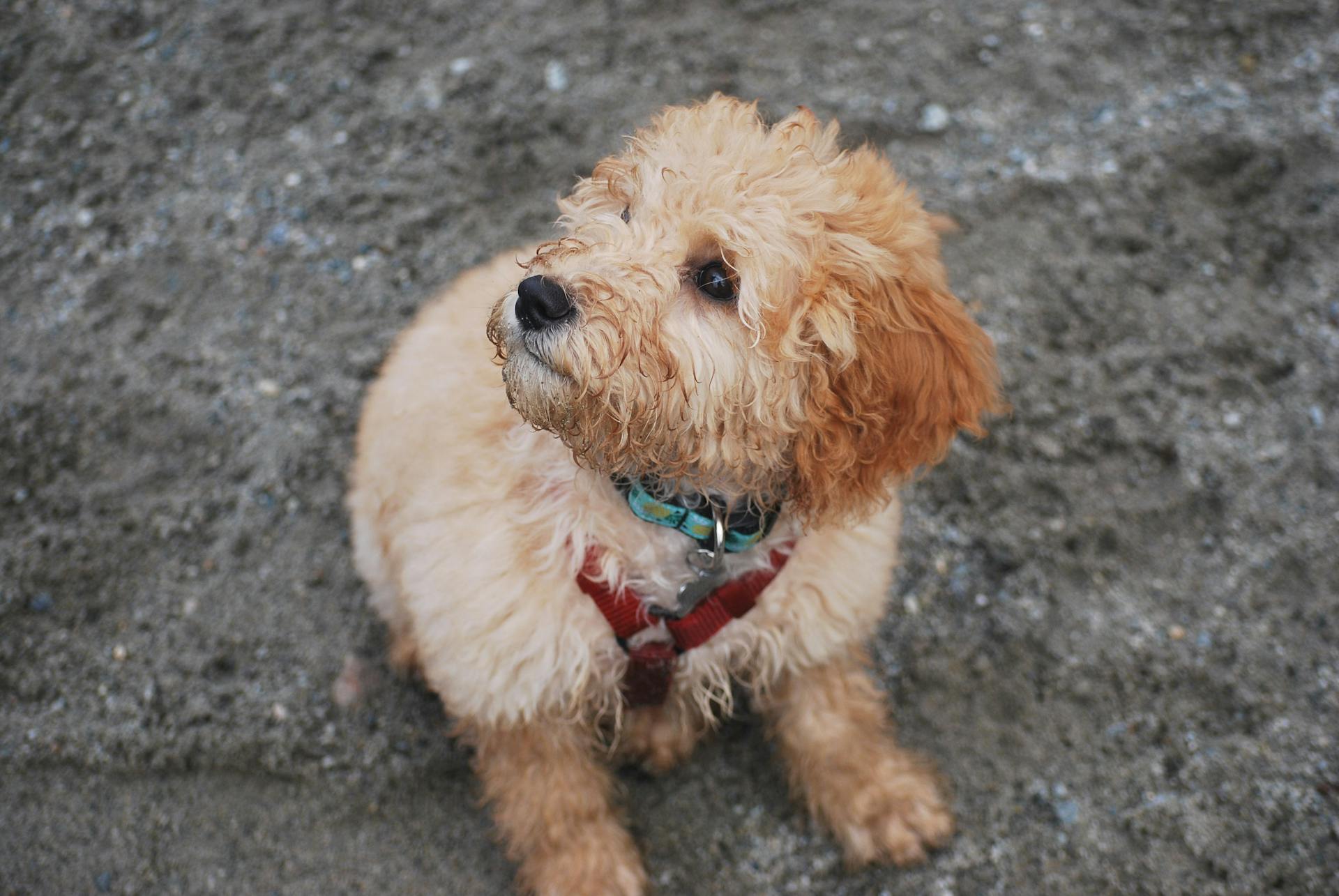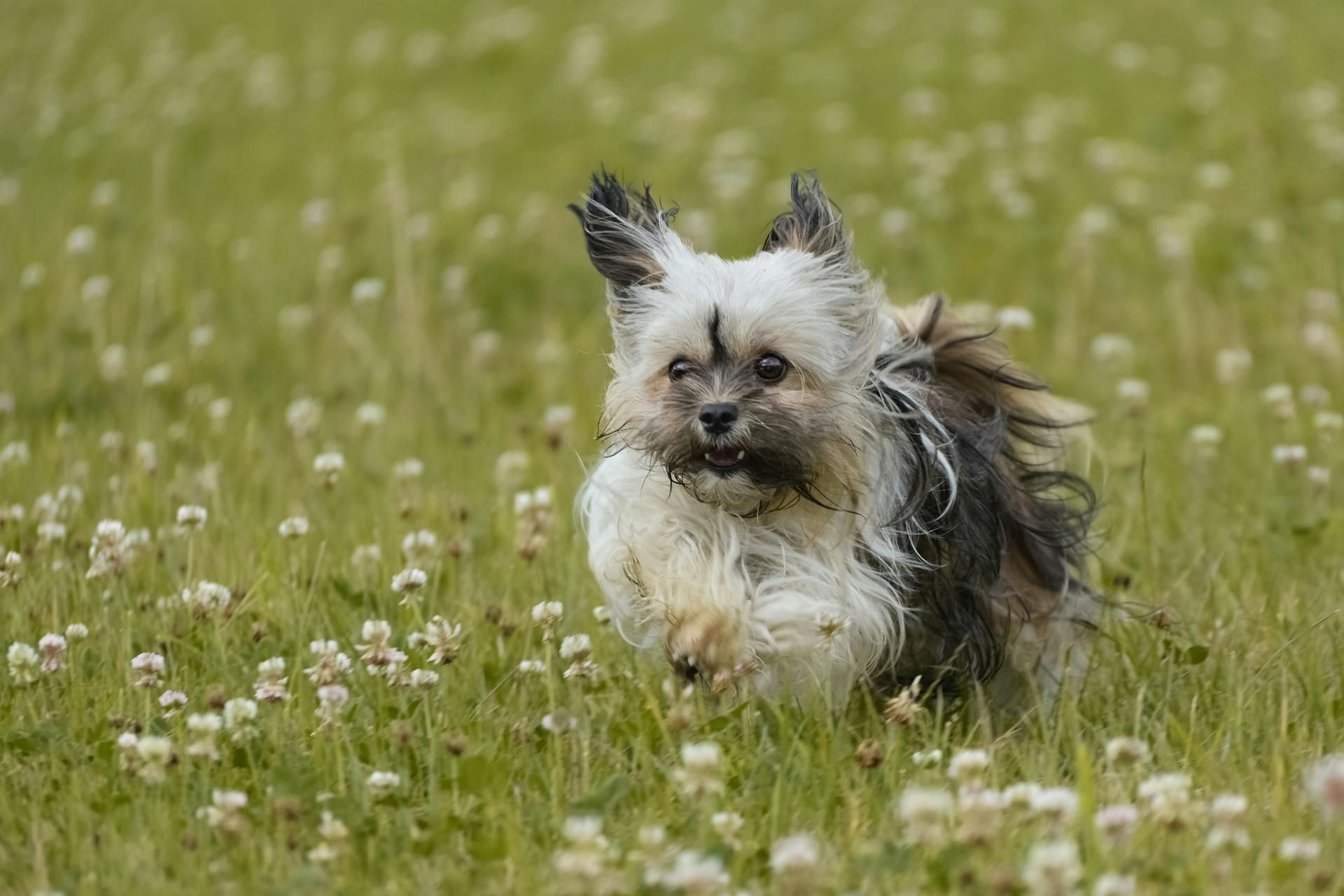
As a pet parent, it can be challenging to decide when and how to transition your pup from pee pads to the great outdoors. Do you start them early, or wait until they’re older? Can dogs use pee pads forever?
When thinking about the long-term use of pee pads for your pup, it is important to consider the pros and cons. Pee pads provide convenience, being easy to clean and maintain – there’s no need for long bathroom walks in inclement weather. Additionally, for those pups with medical or emotional issues, or seniors with an especially hard time with bathroom breaks, pee pads can make life easier for both pet and owner.
However, relying solely on pee pads has its drawbacks. For one thing, sticking exclusively to pee pad use can lead to indoor usage becoming confusing – your pup may start forgetting that outside is the best place for pottying. On top of that, the large amounts of waste generated by pee pad usage can be concerning; some owners may find themselves throwing away a lot of money in their pet’s waste every month.
Additionally, having your dog potty train exclusively indoors means you are denying them the mental stimulation from exploring new smells and environments during pottying sessions outside. Bonding time with a pet parent while going out in all kinds of weather teaches dogs valuable life lessons that enrich their lives– taking them out shows them they are worth caring for and spending time with!
The answer: no; dogs cannot use pee pads forever as this is not conducive to positive bonding experiences between pups and their pet owners. While there are advantages that come with using potty pads on occasion – such as convenience during inclement weather - positive reinforcement through consistent outdoor practice will yield better long-term results!
Can puppies be potty trained using pee pads?
Yes, puppies can most certainly be potty trained using pee pads. Training with pee pads is a great way to introduce puppies to boundaries, help them understand the concept of housebreaking and clean up any mistakes quickly.
One of the main benefits of using pee pads is just how convenient they are, especially for owners who can’t leave their puppies outside for extended amounts of time. Pee pads allow you to replicate the outside surface inside your home in a much easier to manage and conduct location. Utilizing pee pads will help your puppy become familiar with what area you have designated as their ‘outside’—which is likely more hygienic and desirable than training them to eliminate on a rug or worse—on furniture!
Through consistency and rewards, puppies can learn to use the designated area on the pad every time they have a potty break. While larger dogs may be able to go longer stretches of time without needing a break, smaller breeds may need an additional trip outside or bathroom break throughout the day in addition to utilizing their pee pads; which is perfectly normal and encouraged to assist in proper training.
Overall, it’s important for puppy parents looking into training with pee pads that those implementing this method remember that consistency is key, reward good behavior and make sure all members of the household are following through on the same rules so that your furry friend can learn properly.
How often should I replace a dog's pee pad?
When it comes to providing your pup with a place to pee indoors, a pee pad is often the go-to choice for busy dog owners. But how often should you replace these pads? Veterinarians typically recommend changing the pee pad as soon as your pup is done going, and again once or twice daily. This helps ensure the pad stays clean and your pup will be able to find a dry spot for the next time they need to go.
Regularly replacing these pads is essential for keeping odors at bay and breaking bad habits - like your pup thinking anywhere on your floor is an acceptable bathroom spot. If you're still finding areas of your home that smell strongly of urine despite regular swaps, try adding another pee pad and keeping it in a different area each day, rotating through the house. This way, your pup won't become too used to only one spot to use as their restroom which could lead to them soil throughout the home when this spot isn't available. Additionally, make sure you replace any smelly pads more frequently than once or twice a day to really keep odors away or stain and discoloration from setting in place.
No matter what type of pee pad you decide on - scented or unscented, disposable or reusable - making sure it's good condition will help keep things cleaner for longer; leading to happy owners, healthy pups and odor-less homes!
Does using pee pads encourage some dogs to urinate more often?
It’s no secret that many dog owners turn to pee pads to help keep their pup in good house-training habits. After all, when nature calls and you’re not home or busy, a pee pad makes life easier. But when it comes to the long-term use of these convenient potty solutions, there’s some debate in the canine-loving community as to whether they have a positive or negative effect on housebreaking.
While they are certainly helpful as a brief training product and can be beneficial for some pups, an increase in usage could in fact lead your pup to expect to always be able to use them. Letting your puppy become accustomed with pee pads could cause your pooch confusion about what is expected of them – leading to more indoor accidents. Moreover, since it’s very easy for a pup to associate the scent of urine with pee pads – an animal may become conditioned and begin deferring more frequently to the pad then other acceptable areas.
That being said, this isn’t always the case. For some owners – especially those living in apartments or who lack access or time for frequent early morning walks - wee pads can be useful at night when nature calls during sleeping hours and you don’t have time to go outside yet.
In conclusion, it appears that the occasional use of peepad behavior training is perfectly fine and has been met with high success rates with some pups. That said, relying too heavily on this convenience and extending its use over time should be monitored closely so as not too encourage unwanted urination behavior from your beloved pet.
How do I know when my dog has properly learned to use pee pads?
Knowing when your beloved pup has finally mastered how to use pee pads is an essential part of house training. There are several important signs you can look for to help you determine if your pup has achieved this difficult task.
First, you’ll want to pay extra attention to how your pet is reacting to the pee pad itself. If they sniff, circle, or start pawing at it, it’s likely that they’ve figured out what the pad is for and that it’s intended for their bathroom needs.
The most telling sign is when your dog actually starts using the pad instinctively without prompting from you. If they go and use the pad when they need to go without specifically being told first, then they have officially gained that level of understanding on their own. Signal by you may still be necessary at times as our pups don’t always remember to use the toilet!
Make sure not to move pee pads until you have achieved full mastery in this area, as missed “accidents” can occur if your dog gets confused by the relocation. A great way to keep them consistent and focused on one single spot is to offer treats while they are on there; this way they can associate the area with excitement and reward which can help solidify their understanding of what habits should be done on this location specifically.
These are just a few guidelines that will help ensure successful training for how your pup utilizes pee pads in your home! With patience – and plenty of positive reinforcement – you can soon anticipate reliable bathroom operates from your furry friend!
Are there any health risks associated with using pee pads for potty training?
The use of pee pads is gaining traction as an easy and convenient way of potty training pets. But while it may alleviate the strain of older, more traditional methods, there are some potential health risks that come with using pee pads that need to be considered.
Firstly, the artificial scents and chemicals used to attract dogs to urinate in the pads can have significant long-term health implications for your pet. The unnatural substances cause a disruption in the dog's natural processing system and further investigation may be required if health problems arise.
Another short-term concern is that some pee pads come with a skin allergy risk due to plastics which can cause irritation to sensitive areas around the pet’s private parts. The adhesive used on some pads provides no real benefit but still might cause skin irritation if your pet has allergic soles. If this is a potential issue for your pet, make sure you select a pad without any such additives.
Finally, one should note that there are potential hazards associated with using synthetic materials for potty training dogs for an extended time period. Continuous use can injure the dog's feet since it does not offer the shock absorption that grass does which could lead to joint problems over time for larger breeds. Take care in selecting flooring which will be comfortable for your pet and provide cushioning from any hard surface below the pad itself.
In conclusion, if done responsibly, potty training with pee pads can be effective but there are still considerations to keep in mind such as allergies & long-term health risks as well as potential joint pain due to hard surfaces beneath the pads used for extended periods of time. It’s important choose wisely when integrating pee pads into potty training your pet & always consult a veterinarian if you observe any adverse reactions or behavior changes!
Are pee pads a good solution for dogs that have difficulty controlling their bladder?
Pee pads can be a useful solution for dogs who have difficulty controlling their bladders. They are an easy way to manage indoor accidents, as they provide a designated area where your pup can “go” when they have the urge. Pee pads often come pre-scented, which helps encourage your dog to use it as a designated spot to go potty. Additionally, these pads make cleanup fast and easy so you don’t have to worry about urine odors sticking around.
However, pee pads alone may not be enough to fully correct your furry pal’s bladder issues. In addition to having your pup use pee pads, you should also consider other solutions such as scheduling regular bathroom trips and using positive reinforcement when successful potty breaks happen in order for them to create new habits that are more conducive with effective bladder control. Additionally, proper health checks from the vet may help uncover any underlying physical conditions that are at the root of your pup’s bladder issues.
Overall, pee pads may be an effective solution for dogs that have difficulty controlling their bladders but should not be seen as an enough fix in and of themselves. If used in tandem with other positive reinforcement and lifestyle support tools however, these tools can help manage bathroom accidents without the hassle of long clean-up times and persistent odors.
Sources
- https://thedogcentral.com/how-often-should-i-change-puppy-training-pads/
- https://babelbark.com/the-pros-and-cons-of-using-pee-pads-to-house-train-small-dogs/
- https://yopetme.com/can-dogs-use-pee-pads-forever/
- https://belapets.com/can-dogs-use-pee-pads-forever/
- https://askpetguru.com/is-it-okay-to-use-puppy-pads-forever/
- https://babelbark.com/how-to-choose-the-best-location-for-your-dogs-potty-pads/
- https://www.bulldogology.net/how-often-should-i-change-my-dogs-pee-pad/
- https://babelbark.com/potty-training-your-dog-a-guide-to-using-dog-potty-pads/
- https://petkeen.com/why-does-dog-pee-next-to-the-pad/
- https://babelbark.com/how-often-do-you-change-dog-pee-pads/
- https://howtopottytrainapuppy.net/puppy-pee-pads-questions/
- https://dogdigg.com/how-often-should-you-change-dog-pee-pads/
- https://www.thesprucepets.com/potty-pad-training-4178382
- https://wikidoggia.com/post/how-to-use-pee-pads-for-dogs
- https://babelbark.com/how-often-should-you-change-your-dogs-pee-pad/
Featured Images: pexels.com


